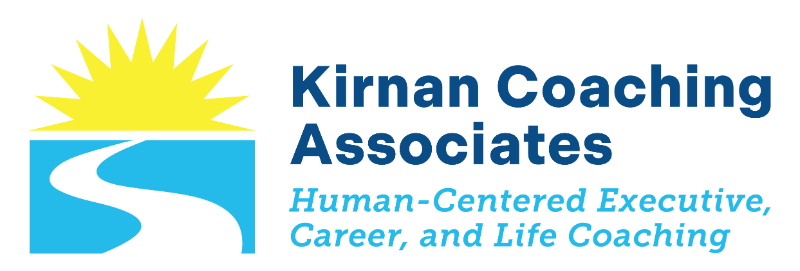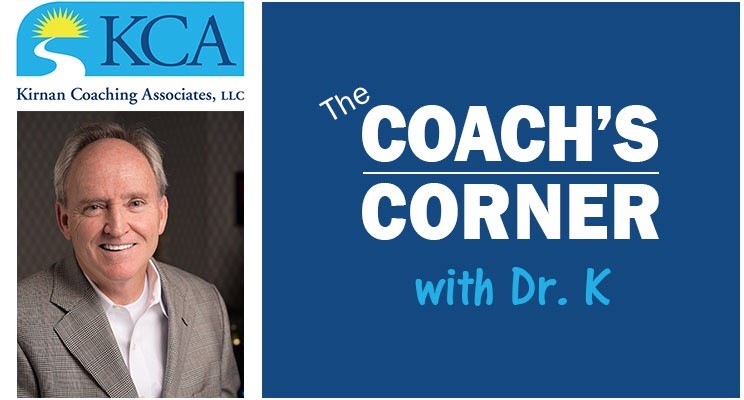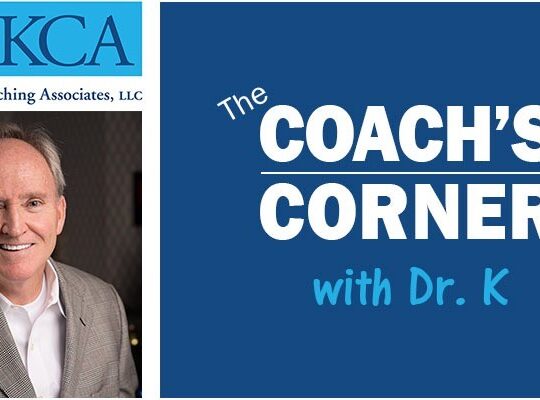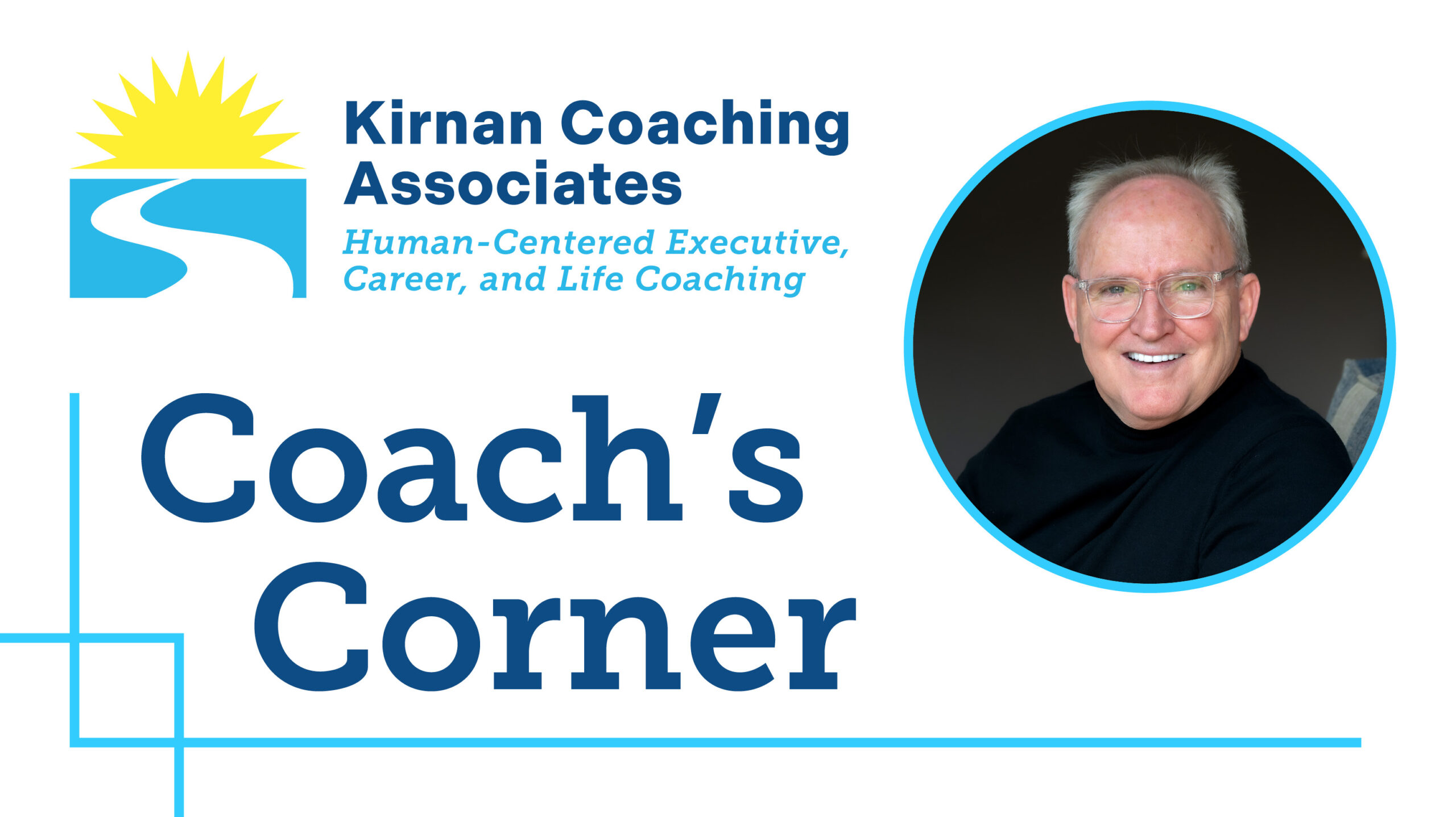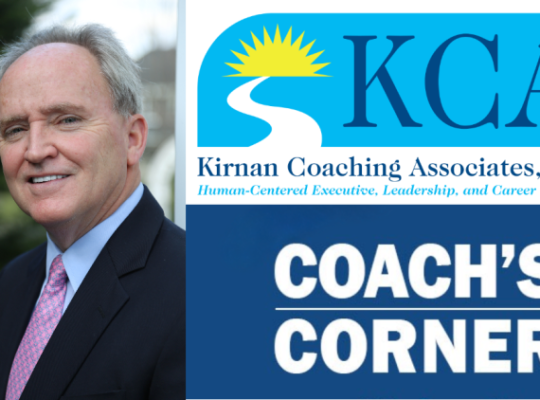“Your vision will become clear when you look into your heart. Who looks outside, dreams. Who looks inside, awakens.” Carl Jung
Preface
As a professional coach, I have found that my clients will often achieve their best outcomes when we focus our sessions on what I call the 4 C’s of effective coaching — i.e., when the client defines the engagement with a Clarity of purpose; acts with Courage to explore all potential options and alternatives; makes a Commitment to personal accountability and action; and then applies a laser-like focus on Completion towards the desired outcome. The 4 C’s serve as a model framework for our coaching sessions because they: 1) help pinpoint the specific issues and areas of focus the client will address; 2) facilitate goal setting and specific action steps that can address the targeted areas; and, 3) provide a dynamic environment for exploration, reflection and personal growth.
In Part 1 of this 4 part series, Coach’s Corner With Dr. K addresses the role that Clarity can play in a successful coaching engagement. Parts 2, 3, and 4 of the series will be published over the coming weeks.
Searching for Clarity in a Coaching Engagement
I continue to be amazed at the roadblocks that often get in the way of both our personal and professional growth. Many of us have the best laid plans but you know the story — those damn rocks keep getting in the way of our progress. There’s so much noise in the background that we can’t seem to find the time for quiet reflection. There’s the incessant demands and distractions of our 24/7 technology-driven economy. BTW, did you answer all of your emails and text messages before you went to sleep last night? How about all that clutter and the myriad of choices that seem to define so many aspects of our daily lives which prompts me to ask you a quick question — do you think you have enough apps on your smart phone because I just realized that I left my car lights on at the train station this morning – ouch! Oh, and what about all of those internal self-saboteurs that take great pleasure in derailing our plans on any given day and often sap our self-esteem, our self-confidence, and the energy we need to move in a new direction. You know, those little gremlins inside your head who keep telling you that “you are just not good enough Jack”. Or, is it that other voice in my head who I’ll just call the great procrastinator who always whispers in my ear “Jack, don’t bother with that new idea you’ve been working on because you know you are going to fail so don’t waste your time”. Fear of failure, excessive self-loathing, and an extreme focus on our past failures are huge rocks that we need to move out of the way if we are going to move forward in a new direction. Clarity is essential to that process.
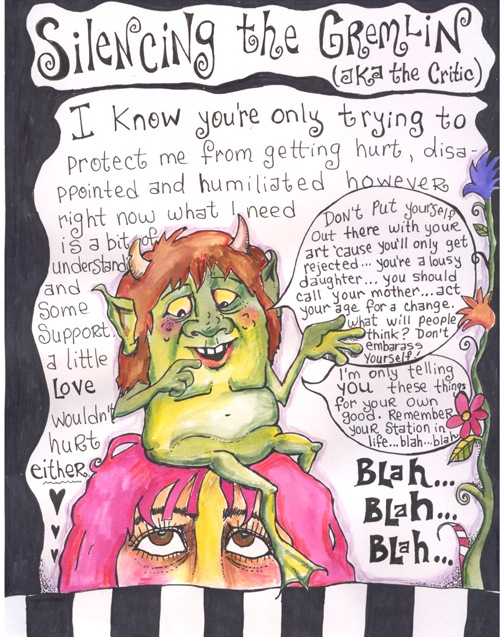
Assessment Tools That Can Help Us Get Clarity
Coaches listen intently to their clients and ask thoughtful questions to help them clarify what specific issues in their work life or personal life they would like to focus on and strive to change for the better. Sometimes its crystal clear what the client is seeking – e.g., a new job, a desire to change industries, a relocation, etc. – sometimes it’s more in the personal realm of their life (e.g., addressing bad habits, focusing on healthy living, finding time for new hobbies/activities, dedicating more of their time on their spirituality/faith, etc). As a critical component in that search for greater clarity, I always encourage my clients to complete The KCA Wheel of Life assessment because it allows them to examine all of the key components of their life in a holistic way — their career, finances, family, personal and professional relationships, physical environment, personal health etc. It opens the door to greater self-awareness of how these life components can interact with one another, sometimes in concert, but often in conflict. As a result, the assessment offers the client a compelling opportunity to clarify and prioritize among the many components that characterize their unique life/work situation.

In my professional work with the Five O’Clock Club, clients are asked to go through a visioning exercise in 5 year increments up to a maximum of a 40-year timeline. I am always gratified when clients complete this process which we call The 40 Year Vision because too often clients don’t take the time to imagine all of the possibilities that might be in front of them – e.g., what is my ideal job (e.g., a large or small company, profit versus non-profit, industry, job function, and specific location); what kind of physical environment would I really like to live in?; how much time do I want to devote to my family and friends?; what hobbies or other activities would I like to find the time for? For some clients in job search mode, clarity of purpose may involve a 2-Step process, with the goal for Step 1 to find a job that is similar to the one you just left. In such an example, Step 2 begins after the client has started their new position. We design a series of conversations that are tailored to their longer-term goal of transitioning to that dream job that could be in a different functional area, a different industry, or even in a different geographical location. It never ceases to amaze me how much clarity clients can garner from completing these simple assessments like The Wheel of Life and The 40 Year Vision. And, that greater clarity of purpose can also provide much-needed energy, enthusiasm, and self-confidence to tackle the specific objectives that are outlined in the coaching engagement.
Do You Ever Feel Like Your Life and Career is Up in the Air?
As someone who loves music and movies, there’s some great material to draw from where the theme of seeking clarity of purpose or the lack thereof takes center stage. For openers, there’s the U2 classic I Still Haven’t Found What I am Looking For, which arguably resonates with even more people today than when it was first released in 1987. Perhaps, that’s because of how quickly things seem to change today and the impact technology can play in our daily life. Many people seem restless today, not content with the way things are even if they accomplished many of the goals they had set for themselves in their personal and professional life. So many professional men and women that I used to work with have expressed to me some initial difficulty in adjusting to a new routine and the slower pace of semi-retirement or retirement. A daily schedule that was once loaded with meetings from morning right on through to dinner is now wide open. Many of us soon realize that we defined ourselves by what we did for a living — e.g., our position and title in the organizational structure of our former firm; or, by the specific industry we may worked in; and, of course the salary and bonus that was associated with that chosen career.
But for people who have been thrust into a life/career transition or an earlier-than-anticipated retirement, we may find ourselves saddled with some really difficult, internal work to do in trying to redefine the answers to those basic questions of “who we are” and “why are we here”. Many of us keep on looking for that next new challenge to tackle, maybe even one that carries new or different responsibilities. A dear friend of mine recently reminded me, “Hey Jack, you and I have fewer tomorrows than yesterdays, so let’s make sure we embrace every moment of every day”. That powerful insight about the clarity we seek in life was captured so brilliantly a few years ago in the lyrics of a heartwarming song from OneRepublic entitled I Lived. “Hope when the moment comes I’ll say — I, I did it all. I, I did it all. I own every second that this world can give. I saw so many places, the things that I did. With every broken bone, I swear I lived.”
The theme of seeking greater clarity in your life and work was also addressed in the critically-acclaimed movie Up in the Air several years ago. I loved the movie when I first saw it in 2010 but it resonates even more for me today because it deals with the practical realities and emotional difficulties any person must deal with when they lose their job. The theme of the movie is a little dark for sure, but it’s really powerful in its overarching message that speaks to clarity and the choices we make in our life and career. George Clooney plays a superstar HR consultant named Ryan Bingham who spends more than 300 days a year meeting with companies around the world to essentially be the guy who fires their employees. He is Mr. Corporate Downsizer in the flesh.
Bingham is not only great at what he does but he is also in high demand as a gifted public speaker and the movie presents two different versions of his famous “What’s in Your Backpack” speech? There’s actually a third moment in the movie that deals with the backpack but I’ll leave that for you to explore on your own as to what it might mean for Bingham. But without spoiling the ending, it’s pretty clear Bingham is having difficulty clarifying what he really wants in his own life or what he should include in his own backpack. He begins to ask himself the very same questions he would always pose to his conference attendees. What’s weighing us down and is too heavy to carry? How would we feel if everything in our backpack was taken away? It’s a pretty powerful question to ask of ourselves because it can lead us to greater clarity in what we want in our life and career.
There’s also the invitation for each of us to explore in a more personal way whether the movie’s title — Up In the Air – applies in some way to our own experience. In Bingham’s case, his job requires him to log millions of airline miles every year so his window seat gives him the opportunity to see those beautiful white clouds emblazoned across the blue sky. In the final scene of the movie, the viewer is left to wonder what Bingham might do next as he peers intently at the massive Departures/Arrivals Board at the airport. Will Ryan keep flying off to some new destination in his future or will he decide to come back down from the sky and finally focus on his own life, his own needs and his own priorities? In short, it’s as if Bingham hasn’t yet been able to clarify what’s really important in his own life and Jason Reitman, the Director, seems to be asking us that same question — namely, do we really have the clarity we are looking for in our everyday life and career?
One final observation on clarity. For me personally, and especially having just watched the movie a second time, I was moved by the powerful lyrics in the movie’s soundtrack — a title song of the same name by Kevin Renick, a beautiful tune and one that captures the feelings so many people experience in navigating today’s challenging job market and the 24/7 clutter of everyday life. The song captures the anxieties and disappointment that many people feel today over not being able to follow and realize their hopes and dreams for a future they once thought was possible; In a sense, Renick suggests that the clarity of purpose we are all seeking in life and career has become so daunting that one is left with no other choice but to stay “Up In the Air”. And, in the process, people avoid making the very decisions and choices that could potentially lead them to a greater sense of fulfillment and happiness.
So in sum, the first objective in any coaching engagement is to do everything we can to help the client have a clear idea of what it is they want to work on and what specifically they would like to get out of the coaching engagement (i.e., the deliverables). We try and clarify with as much precision as possible what the coaching engagement will cover and how the client can measure and define a successful outcome. Clarity is the first step and arguably the most important one in defining the coaching engagement.
My very best wishes to all of my clients, colleagues, and friends in finding the clarity you so richly deserve. Stay tuned for more discussion on the other 4 C’s of Coaching — Courage, Commitment, and Completion — over the next few weeks!
Warm regards,
Dr. K
